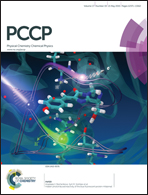Modelling bio-electrosynthesis in a reverse microbial fuel cell to produce acetate from CO2 and H2O
Abstract
Bio-electrosynthesis is one of the significant developments in reverse microbial fuel cell technology which is potentially capable of creating organic compounds by combining CO2 with H2O. Accordingly, the main objective in the current study was to present a model of microbial electrosynthesis for producing organic compounds (acetate) based on direct conduction of electrons in biofilms. The proposed model enjoys a high degree of rigor because it can predict variations in the substrate concentration, electrical potential, current density and the thickness of the biofilm. Additionally, coulombic efficiency was investigated as a function of substrate concentration and cathode potential. For a system containing CO2 as the substrate and Sporomusa ovata as the biofilm forming microorganism, an increase in the substrate concentration at a constant potential can lead to a decrease in coulombic efficiency as well as an increase in current density and biofilm thickness. On the other hand, an increase in the surface cathodic voltage at a constant substrate concentration may result in an increase in the coulombic efficiency and a decrease in the current density. The maximum coulombic efficiency was revealed to be 75% at a substrate concentration of 0.025 mmol cm−3 and 55% at a surface cathodic voltage of −0.3 V producing a high range of acetate production by creating an optimal state in the concentration and potential intervals. Finally, the validity of the model was verified by comparing the obtained results with related experimental findings.


 Please wait while we load your content...
Please wait while we load your content...